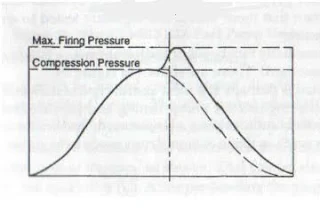Fuel cost is one of the most important factors that shipping companies consider while predicting profits. To achieve maximum profit and to reduce pollution from ships, the propulsion engines need to burn fuel oil efficiently. Several technologies have come up in the market to help reduce fuel oil consumption of marine engines to as low as 163 gm/KWH, along with the reduction of carbon emissions.
In this article, we have discussed eight important aspects of marine fuel combustion which are necessary to achieve efficient combustion of fuel oil and to reduce fuel consumption and exhaust space fouling. Controlling each of these components is a sure shot way to achieve efficient combustion of fuel oil.
1). Fuel Treatment: The first step towards efficient fuel combustion starts outside marine engines. Fuel oil treatment, which includes removing impurities such as deposits and water in settling tanks and centrifuges, is extremely important.
2) Correct Fuel Temperature: The fuel oil viscosity also plays an extremely important role in the combustion process. The temperature of the fuel oil controls the viscosity required at the time of injection (approx- 10 to 15 CST) and ensures proper atomization and penetration. The correct temperature is also required to reduce NOX and SOX emissions coming out from the engine.
3) Correct Air Fuel Ratio: No combustion can take place without the presence of air or oxygen. For marine engines, excess air must be supplied to the engine as the time for the combustion process is less and because low-grade fuel requires more air to produce less exhaust smoke. Sufficient oxygen must be available to burn not only hydrogen and oxygen in the fuel oil but also other combustibles such as sulfur.
4) Correct Injection Timing: The correct fuel injection timing leads to high power generation without shock loading on the engine components. Proper injection timing also reduces smoky exhaust caused because of late injection inside the cylinder. Fuel pumps and injector systems must be maintained as required, along with other factors discussed in this article.
5) Atomization: Atomization is the process of breaking the fuel oil particles of hydrogen and carbon to extremely small droplets, which are easier to burn inside the combustion space.
This is done by maintaining the correct viscosity, pressure, and injection components of the engine. The generation of perfect atomization is one of the most important factors for efficient combustion.
6) Penetration: Penetration is the distance traveled by the fuel particle inside the combustion chamber just before burning. Atomization and penetration oppose each other hence the correct fuel injector and injection system are required for proper penetration of the fuel. If the penetration is less then the fuel will burn closer to the nozzle tip and damage it, whereas if the penetration is more then the fuel will strike the piston crown and foul the same.
7) Air Fuel Mixing: The combustion can be made more efficient if the air and fuel are mixed properly with each other during the time of burning.
This can be achieved by supplying air in the cylinder via an angled hole in the liner to create a swirling motion for better mixing.
8) Compression temperature: Marine engines are compression ignition engines wherein heat for the combustion is provided by the high compression pressure from the pistons to create higher temperatures inside the cylinder. If the cylinder components such as the piston, piston ring, or liner are worn out or leaky, the rated compression pressure will not be achieved and the combustion will not be efficient. Hence all parts must be maintained properly and renewed when required.
The power generated by the engine is directly related to how the fuel is burnt inside the engine. For a better understanding of this process and to monitor the complete combustion process inside the cylinder, the indicator cards must be taken at regular intervals of time.
For further please contact us, at sales@wmablog.com
Read More Articles:
- Achieve Efficient Combustion in Marine Engines
- Wichita Clutch Air Brake
- Lenc Energy Gas Solenoid Valve



Komentar
Posting Komentar
Informasi Pilihan Identitas:
Google/Blogger : Khusus yang punya Account Blogger.
Lainnya : Jika tidak punya account blogger namun punya alamat Blog atau Website.
Anonim :